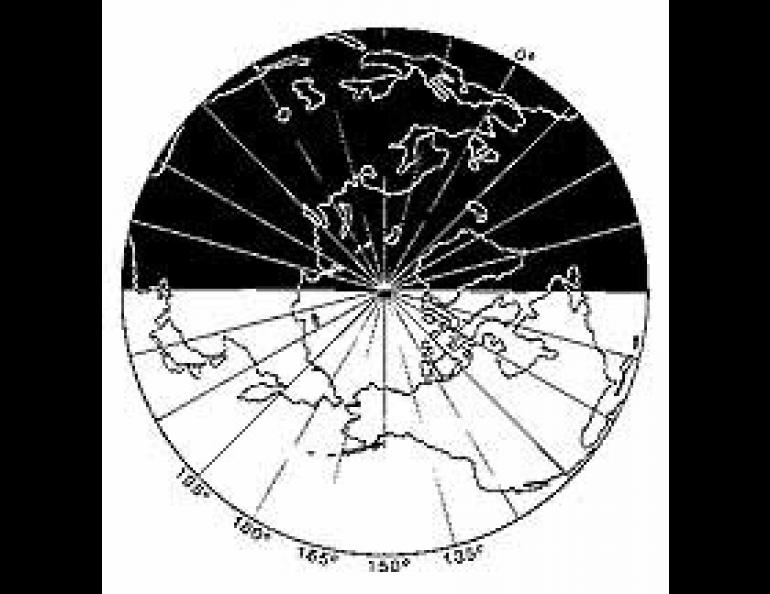
Equinoxes, Time Zones and Daylight Savings
At 6:52 pm 135th meridian time, March 20, 1987, the sun is halfway through setting at the South Pole and halfway through rising at the North Pole. Everywhere else on Earth that day, the day of the spring equinox, the sun rises due east 6 hours before local solar noon and sets due west 6 hours after local solar noon. So why aren't the equinox sunrise and sunset times in this newspaper 6 am and 6 pm?
One reason lies in how we define sunrise and sunset. "Official" sunrise and sunset occur when the upper edge of the sun appears to be just below the horizon, allowing for the bending of light rays passing through the atmosphere. The combination of using the upper edge of the sun and bending of light means that the center of the sun is almost a degree below the horizon at official sunrise and sunset times. This can result in 10 to 15 minutes difference between the official sunrise time and the time when the center of the sun is actually in line with the observer's horizon.
A more important reason lies in how we define time of day. Solar noon is defined as the time when the sun is on the north-south line passing directly over the observer's head. Unless two observers are directly north and south of each other, their solar noons will not coincide. Solar noon at Delta Junction, for instance, is about 8 minutes earlier than at Fairbanks. When railroads began to spread, schedules became impossible when every town had its own time, so time zones were set up. Fifteen degrees of longitude corresponds to 1 hour difference in solar time, so it was decided that official time would correspond to the mean solar time of the closest meridian of longitude which could be divided evenly by 15 degrees. Because it was convenient to have administrative regions all on the same time, the boundaries between time zones over the continents were bent around a bit to follow county, state and national boundaries.
Alaska stretches over almost 60 degrees of longitude, which means that solar noon is 4 hours later at Attu than along the Portland Canal in the extreme southeast. For administrative reasons, however, the state is divided into only two time zones. The Aleutian Islands, from 170 degrees west to 188 degrees west, are on 150th meridian time. This means that solar noon is between an hour and 20 minutes and 2 1/2 hours after clock noon in this area. The rest of the state, from 130 degrees west to 170 degrees west, is on 135th meridian time. Solar noon on St. Lawrence Island, 35 degrees west of its time meridian, occurs 2 hours and 20 minutes after clock noon.
In summer, daylight savings time essentially moves the reference meridians an additional 15 degrees to the east, and most of Alaska is on 120th meridian time. This doesn't bother anyone in midsummer, when the days are long, but it creates some peculiar situations in October. In fact, the logical time to switch back and forth from normal to daylight time would be the equinoxes with their 12 hour days, not the last weekend in April, when the days are so long that the extra light in the evening is unneeded, and the last weekend in October, when we're getting up and going to work and school in the dark even on standard time. Is it possible that the politicians who set up daylight savings didn't understand how day length changes with the seasons?
Update July 1996: In fact, the start of daylight savings time was shifted to the first Sunday in April in 1987, about the time this article first appeared.





